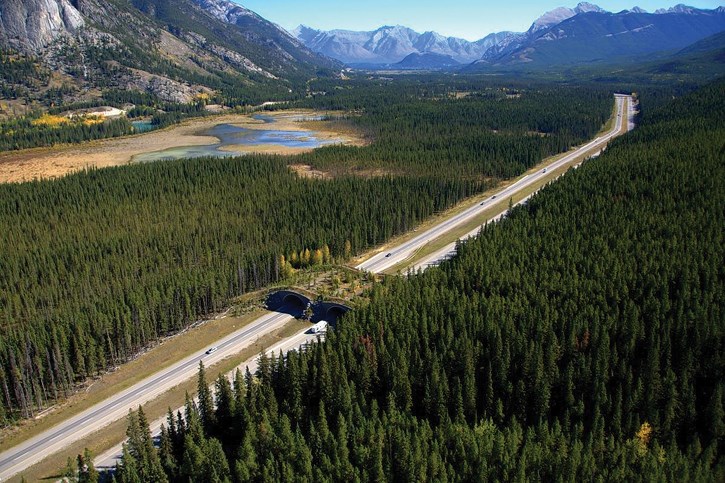BANFF – The Town of Banff is throwing its support behind ongoing calls for a wildlife crossing on the Trans-Canada Highway east of Canmore.
In a letter to the Alberta Transportation Minister Ric McIver, Mayor Karen Sorensen echoed ongoing calls from local, regional and national conservation groups, as well as the Town of Canmore, for a crossing structure to be built at Bow Valley Gap.
“While the area east of Canmore is outside our jurisdiction, wildlife know no boundaries,” wrote Sorensen.
“We support the wildlife crossing proposal as a way to reduce conflicts between vehicle traffic accessing our region and the wildlife that depend on north-south corridors for migration and territorial movement.”
The Bow Valley is one of the most important regional wildlife corridors in Alberta and it’s also a busy corridor for people, with an average of 22,000 vehicles every day buzzing by on the highway.
Deer, elk, bighorn sheep, moose, cougars, lynx, wolves, black and grizzly bears use the high quality habitat along the Bow River valley bottom to move between the protected areas of Banff National Park and Kananaskis Country.
A growing body of scientific research from around the world shows crossing structures and associated highway fencing saves the lives of wildlife and people.
In Banff National Park, there are now 38 wildlife underpasses and six overpasses along an 82-kilometre stretch of highway from the park’s east entrance to the border of Yoho National Park.
Highway fencing in the park has reduced wildlife-vehicle collisions by more than 80 per cent and, for elk and deer alone, by more than 96 per cent.
Mayor Sorensen said a wildlife crossing near Bow Valley Gap aligns with the principles of the human-wildlife coexistence initiative, which involved Town of Banff, the Town of Canmore, Banff National Park, and Alberta Environment.
“Wildlife fencing and crossing structures in Banff National Park are a world-renowned success story, supported by a wealth of studies involving researchers from around the world,” she said.
“The approach could extend the conservation benefits into the Bow Valley Gap, and further enhance safety for the millions of people who travel the Trans-Canada Highway.”
A 2012 study identified 10 sites along a 39 km stretch of highway from the east gate of Banff to Highway 40, with recommendations including fencing and associated underpasses.
The study, by Miistakis Institute and Western Transportation Institute, also called for one overpass at Bow Valley Gap east of Lac Des Arc. A critical wildlife corridor there has historically seen the highest number of vehicle-wildlife collisions in the entire study area.
Last year, Alberta Transportation hired a consultant to do the design and cost benefit analysis of the structure, expected to cost about $7 million to build.
The fate of this project is currently unknown under the United Conservative government.
A spokesperson for Alberta Transportation said they are currently studying the best ways to redirect wildlife or alert drivers to problem areas.
“The department has retained an engineering consultant to determine the best location of a wildlife crossing and to design a wildlife overpass and fencing on the TransCanada between Lac des Arcs and Highway 1X,” wrote Wayne Wood in an email.
“These commitments will be reviewed as we develop the 2019 capital plan along with other important projects.”




